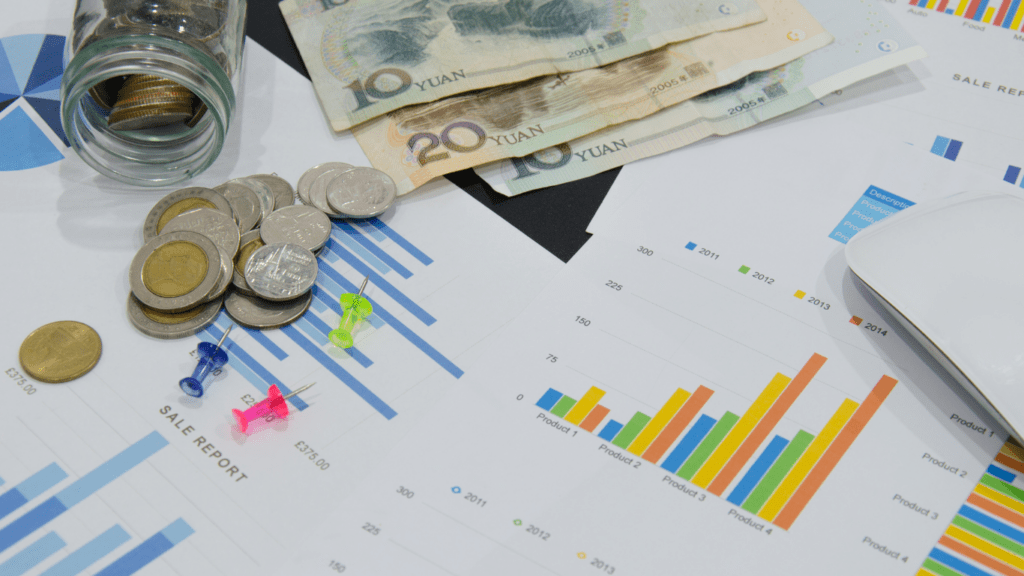Navigating the dynamic landscape of real estate investments requires a keen understanding of how market cycles can influence opportunities and risks. As an investor, I’ve learned firsthand the profound impact that these cycles can have on the success of real estate ventures. From the exhilarating highs of a seller’s market to the strategic advantages presented during a buyer’s market, each phase offers unique prospects for those astute enough to recognize and capitalize on them.
In this article, I’ll delve into the intricacies of market cycles and how they shape the real estate investment landscape. By staying attuned to the fluctuations in supply, demand, and pricing trends, investors can position themselves to thrive in any market condition. Join me as we explore the nuances of market cycles and uncover strategies to navigate them successfully in the realm of real estate investments.
Understanding Market Cycles
Exploring market cycles in real estate investments is crucial to navigating the dynamic landscape of opportunities and risks. Observing and analyzing these cycles allows me to identify optimal moments to engage in the market effectively and capitalize on its fluctuations. Being aware of the distinct phases, such as seller’s and buyer’s markets, enables me to adjust strategies to align with the current market sentiment and demands. To thrive in any market condition, I continuously monitor supply, demand, and pricing trends, ensuring I’m well-positioned to make informed investment decisions.
Factors Affecting Real Estate Investments
When considering real estate investments, understanding various factors that influence the market is crucial for making informed decisions and maximizing returns. Factors such as economic indicators, interest rates, and supply and demand dynamics play a significant role in shaping the real estate landscape.
Economic Indicators
Economic indicators, such as GDP growth, employment rates, and consumer confidence, have a direct impact on the real estate market. A strong economy usually leads to increased demand for real estate properties, driving up prices and rental incomes. On the other hand, a recession or economic downturn can result in lower demand and declining property values. Monitoring these indicators provides valuable insights into the health of the market and helps investors anticipate potential shifts.
Interest Rates
Interest rates set by central banks influence borrowing costs for real estate investments. When interest rates are low, borrowing becomes cheaper, encouraging investors to take out loans to finance property acquisitions. Conversely, high-interest rates can deter investment as borrowing costs rise, potentially slowing down the market activity. Understanding how interest rate fluctuations impact mortgage rates and overall affordability is essential for real estate investors to make strategic decisions.
Supply and Demand Dynamics
The balance between supply and demand is a critical factor influencing real estate investments. A mismatch between supply and demand levels can lead to either a buyer’s or seller’s market, affecting property prices and rental yields. Understanding local market dynamics, such as new construction projects, population growth, and demographic trends, can help investors gauge future demand and supply levels. Adapting investment strategies based on these dynamics can enhance portfolio performance and mitigate risks in fluctuating market conditions.
Strategies for Investing in Different Market Phases
Navigating through various market phases requires adaptable strategies to optimize real estate investments effectively. Understanding the distinct characteristics of each phase empowers me to make informed decisions to capitalize on opportunities and mitigate risks. Here are strategies tailored for different market phases:
1. Expansion Phase
In an expansion phase, characterized by economic growth and rising demand, I focus on:
- Acquiring properties with growth potential in high-demand areas.
- Leveraging low-interest rates to finance acquisitions.
- Diversifying my portfolio to maximize returns as property values appreciate.
2. Peak Phase
During the peak phase when the market reaches its highest point, I consider:
- Evaluating market saturation to avoid overpaying for properties.
- Adopting a cautious approach by selling underperforming assets.
- Securing long-term financing to weather potential market corrections.
3. Contraction Phase
In a contraction phase marked by declining market activity, my strategies include:
- Identifying distressed properties for potential value appreciation.
- Negotiating favorable terms with motivated sellers.
- Maintaining liquidity to seize investment opportunities at lower prices.
4. Trough Phase
During the trough phase, when the market hits its lowest point, I focus on:
- Capitalizing on market dislocations to acquire undervalued assets.
- Conducting thorough due diligence to assess renovation or redevelopment potential.
- Securing short-term financing options to optimize cash flow during the recovery phase.
- Investing in emerging markets with growth potential.
- Monitoring economic indicators for signs of market stabilization.
- Implementing adaptive strategies to capitalize on early-stage opportunities for maximum returns.
Risks and Opportunities in Market Cycles
Understanding market cycles in real estate investments is crucial to effectively navigate the ever-changing landscape and capitalize on potential opportunities while mitigating risks. In each phase of the market cycle – expansion, peak, contraction, and trough, distinct risks and opportunities present themselves, shaping investment strategies correspondingly.
During the expansion phase, when the market is thriving and demand is high, one key opportunity is to acquire properties in areas experiencing significant growth. These high-demand regions often offer excellent investment potential as property values are on the rise due to increased demand.
As the market reaches its peak, investors face the risk of overvaluation and the possibility of a downturn. It is essential during this phase to evaluate market saturation carefully to avoid investing in properties that may soon see a decrease in value. Opportunities lie in diversifying the investment portfolio and focusing on stable assets to weather potential market corrections.
In the contraction phase, characterized by declining prices and market instability, investors can explore opportunities in distressed properties. Identifying undervalued assets and negotiating favorable deals can lead to substantial returns once the market stabilizes and prices begin to recover.
Finally, in the trough phase, where market conditions are at their lowest, there is a chance to capitalize on undervalued properties that have the potential for long-term growth. Investing in emerging markets during this phase can be particularly rewarding as these areas often show rapid appreciation once the market starts to recover.
To maximize returns and navigate the complexities of market cycles, it’s crucial to monitor economic indicators closely, adapt investment strategies based on the current phase, and remain agile in decision-making. By leveraging tailored strategies for each market cycle phase, investors can position themselves to seize opportunities and manage risks effectively in the ever-evolving real estate landscape.



 Roger Estes has played a crucial role in the development of Residence Resale Tactics, bringing his analytical skills and attention to detail to the project. As a dedicated helper, Roger has been instrumental in researching emerging market trends and ensuring the platform stays ahead of the curve in providing up-to-date real estate information. His commitment to accuracy and relevance has been essential in creating a resource that real estate professionals and homeowners can rely on for practical guidance.
Roger's contributions go beyond just research; his proactive approach and collaborative spirit have fostered a productive working environment within the team. His efforts have helped shape the platform's strategic direction, allowing Residence Resale Tactics to deliver content that is both insightful and actionable, thereby enhancing its reputation as a trusted authority in the real estate industry.
Roger Estes has played a crucial role in the development of Residence Resale Tactics, bringing his analytical skills and attention to detail to the project. As a dedicated helper, Roger has been instrumental in researching emerging market trends and ensuring the platform stays ahead of the curve in providing up-to-date real estate information. His commitment to accuracy and relevance has been essential in creating a resource that real estate professionals and homeowners can rely on for practical guidance.
Roger's contributions go beyond just research; his proactive approach and collaborative spirit have fostered a productive working environment within the team. His efforts have helped shape the platform's strategic direction, allowing Residence Resale Tactics to deliver content that is both insightful and actionable, thereby enhancing its reputation as a trusted authority in the real estate industry.